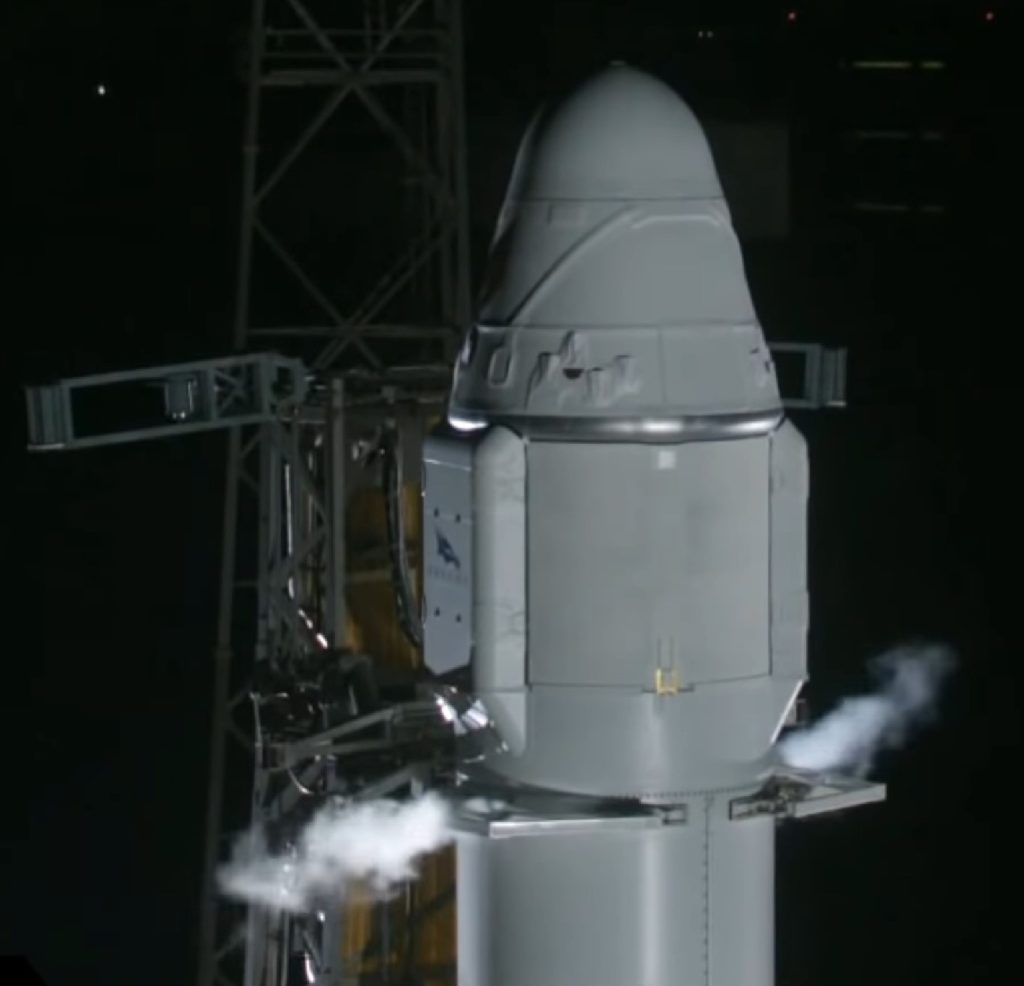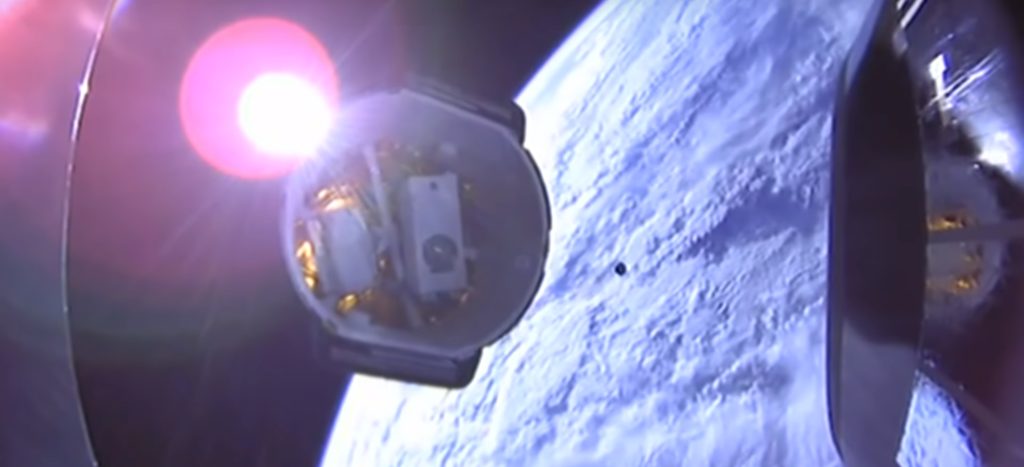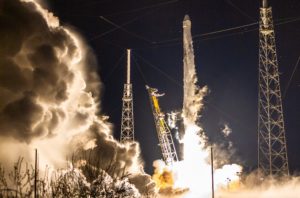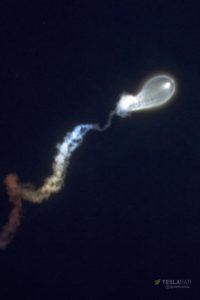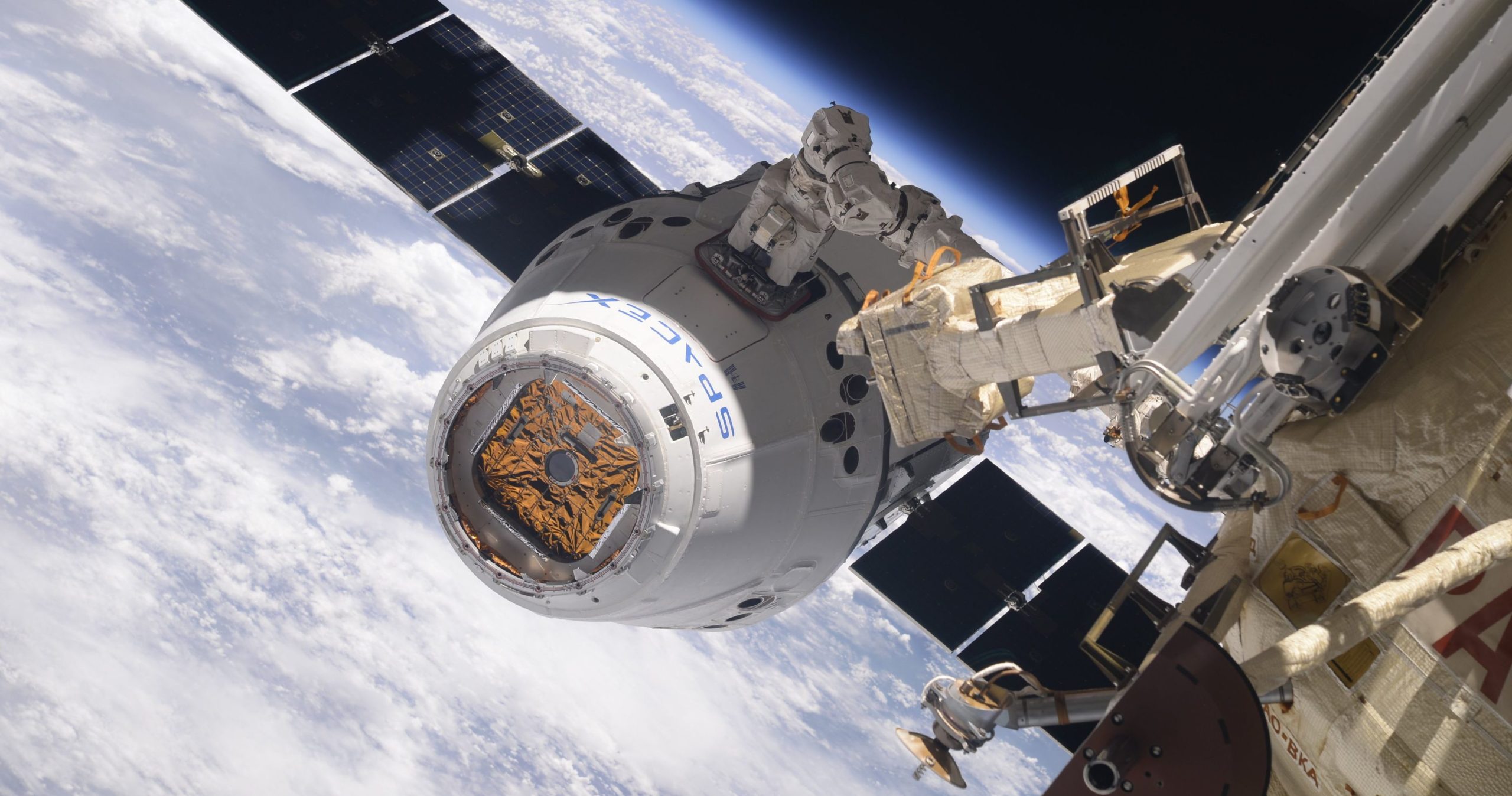
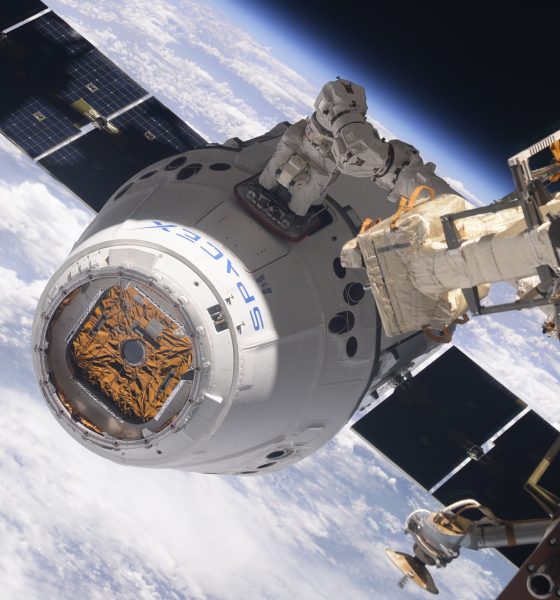
News
SpaceX Dragon spacecraft heads to ISS as crewed version preps for debut
SpaceX’s third flight-proven Cargo Dragon spacecraft has arrived in orbit and is currently making its way uphill to the International Space Station for the 15th SpaceX resupply, scheduled for arrival around 7 am EDT July 2nd. Meanwhile, the company’s new Crew Dragon is undergoing its own earthbound trials, split between an artificial vacuum chamber and parachute drop tests over the California desert.
Following a twilight launch that brought to a spectacular close an era of older, less-reusable Falcon 9 rockets, the Cargo Dragon capsule trunk full of several tons of supplies and scientific instruments were placed into a parking orbit roughly 200 miles above Earth’s surface, trailed by a mesmerizing rainbow plume created by Falcon 9’s first and second stage over their nine-minute journey.
- CRS-15 minutes before an early July 29 launch. (SpaceX)
- Nine minutes after launch, Falcon 9’s upper stage shut off its main engine and Cargo Dragon detached. (SpaceX)
After arriving in orbit, Crew Dragon separated from Falcon 9’s second stage and officially commenced its second orbital mission roughly 25 months after its first, CRS-9 in July 2016. Alongside the three that have now flown successfully, all five of SpaceX’s remaining Commercial Resupply Services-1 (CRS-1) missions will be conducted with flight-proven Dragon spacecraft, two or three of which will see the already-reused capsules fly a third time before being officially retired.
After SpaceX’s first CRS contract comes to an end, currently scheduled for early 2020 with the CRS-20 mission, the upgraded Dragon 2 will take over all future cargo launches. Dragon 2’s cargo configuration is expected to be a slightly different version of the Crew Dragon capsule and trunk, scheduled to debut as early as late 2018, but the specifics are still somewhat hazy. Most probably, recovered Crew Dragon capsules – unlikely to ever been certified to fly NASA astronauts – will instead be refurbished after their first orbital missions, modified slightly to meet the cargo requirements, and then use to complete SpaceX’s CRS-2 contract alongside their crew transport missions.
At Naval Air Facility El Centro in Southern California, SpaceX recently completed its 16th test of Crew Dragon’s parachute system—verifying the system’s ability to slow Crew Dragon and ensure a safe landing in the unlikely event of a low altitude abort. https://t.co/OOQnAtNXJ3 pic.twitter.com/kFX7Qth3AK
— SpaceX (@SpaceX) June 26, 2018
While its predecessors continue to grow SpaceX’s experience in orbit, the Crew Dragon program is making its own impressive progress towards the first uncrewed and crewed launch debuts in late 2018 and early 2019. DM-1, the capsule tasked with that first uncrewed demonstration, is likely nearing the end of a suite of tests inside NASA’s huge Plum Brook vacuum chamber facilities, ensuring that the brand-new spacecraft behaves as expected in the extreme environment of space. If successful, the capsule will be sent on its way to Cape Canaveral, Florida to begin true prelight preparations for the first time ever, while its trunk – an expendable structure installed at the base of the craft with solar arrays, radiators, and bays for unpressurized cargo – will be sent back to the Hawthorne, CA factory to be outfitted with flight hardware, after which it will ship to Florida one to two months after the capsule arrives.
- Crew Dragon parachute tests are likely to continue into the summer to ensure NASA certification in time for DM-1. (SpaceX)
- Falcon 9 B1045 and it’s flight-proven Cargo Dragon head skyward, marking the end of last-gen SpaceX Falcon 9 launches. (Tom Cross)
- CRS-15’s ‘jellyfish’ plume glowed as Falcon 9 flew above the terminator into the morning sun. (Tom Cross)
Meanwhile, the CRS-15 Dragon capsule currently orbiting Earth will dock with the International Space Station early Monday morning and is scheduled to depart, reenter, and return to Hawthorne, CA for Flight 3 refurbishment in early August, at which point the DM-1 Crew Dragon ought to have arrived in Florida. Aside from Dragon, SpaceX has three new Falcon 9 Block 5 launches scheduled between July 20 and August 2, the boosters of which will all be recovered aboard SpaceX’s fleet of drone ships
Follow us for live updates, peeks behind the scenes, and photos from Teslarati’s East and West Coast photographers.
Teslarati – Instagram – Twitter
Tom Cross – Twitter
Pauline Acalin – Twitter
Eric Ralph – Twitter

News
Man credits Grok AI with saving his life after ER missed near-ruptured appendix
The AI flagged some of the man’s symptoms and urged him to return to the ER immediately and demand a CT scan.

A 49-year-old man has stated that xAI’s Grok ended up saving his life when the large language model identified a near-ruptured appendix that his first ER visit dismissed as acid reflux.
After being sent home from the ER, the man asked Grok to analyze his symptoms. The AI flagged some of the man’s symptoms and urged him to return immediately and demand a CT scan. The scan confirmed that something far worse than acid reflux was indeed going on.
Grok spotted what a doctor missed
In a post on Reddit, u/Tykjen noted that for 24 hours straight, he had a constant “razor-blade-level” abdominal pain that forced him into a fetal position. He had no fever or visible signs. He went to the ER, where a doctor pressed his soft belly, prescribed acid blockers, and sent him home.
The acid blockers didn’t work, and the man’s pain remained intense. He then decided to open a year-long chat he had with Grok and listed every detail that he was experiencing. The AI responded quickly. “Grok immediately flagged perforated ulcer or atypical appendicitis, told me the exact red-flag pattern I was describing, and basically said “go back right now and ask for a CT,” the man wrote in his post.
He copied Grok’s reasoning, returned to the ER, and insisted on the scan. The CT scan ultimately showed an inflamed appendix on the verge of rupture. Six hours later, the appendix was out. The man said the pain has completely vanished, and he woke up laughing under anesthesia. He was discharged the next day.
How a late-night conversation with Grok got me to demand the CT scan that saved my life from a ruptured appendix (December 2025)
byu/Tykjen ingrok
AI doctors could very well be welcomed
In the replies to his Reddit post, u/Tykjen further explained that he specifically avoided telling doctors that Grok, an AI, suggested he get a CT scan. “I did not tell them on the second visit that Grok recommended the CT scan. I had to lie. I told them my sister who’s a nurse told me to ask for the scan,” the man wrote.
One commenter noted that the use of AI in medicine will likely be welcomed, stating that “If AI could take doctors’ jobs one day, I will be happy. Doctors just don’t care anymore. It’s all a paycheck.” The Redditor replied with, “Sadly yes. That is what it felt like after the first visit. And the following night could have been my last.”
Elon Musk has been very optimistic about the potential of robots like Tesla Optimus in the medical field. Provided that they are able to achieve human-level articulation in their hands, and Tesla is able to bring down their cost through mass manufacturing, the era of AI-powered medical care could very well be closer than expected.
News
Tesla expands Model 3 lineup in Europe with most affordable variant yet
The Model 3 Standard still delivers more than 300 miles of range, potentially making it an attractive option for budget-conscious buyers.

Tesla has introduced a lower-priced Model 3 variant in Europe, expanding the lineup just two months after the vehicle’s U.S. debut. The Model 3 Standard still delivers more than 300 miles (480 km) of range, potentially making it an attractive option for budget-conscious buyers.
Tesla’s pricing strategy
The Model 3 Standard arrives as Tesla contends with declining registrations in several countries across Europe, where sales have not fully offset shifting consumer preferences. Many buyers have turned to options such as Volkswagen’s ID.3 and BYD’s Atto 3, both of which have benefited from aggressive pricing.
By removing select premium finishes and features, Tesla positioned the new Model 3 Standard as an “ultra-low cost of ownership” option of its all-electric sedan. Pricing comes in at €37,970 in Germany, NOK 330,056 in Norway, and SEK 449,990 in Sweden, depending on market. This places the Model 3 Standard well below the “premium” Model 3 trim, which starts at €45,970 in Germany.
Deliveries for the Standard model are expected to begin in the first quarter of 2026, giving Tesla an entry-level foothold in a segment that’s increasingly defined by sub-€40,000 offerings.
Tesla’s affordable vehicle push
The low-cost Model 3 follows October’s launch of a similarly positioned Model Y variant, signaling a broader shift in Tesla’s product strategy. While CEO Elon Musk has moved the company toward AI-driven initiatives such as robotaxis and humanoid robots, lower-priced vehicles remain necessary to support the company’s revenue in the near term.
Reports have indicated that Tesla previously abandoned plans for an all-new $25,000 EV, with the company opting to create cheaper versions of existing platforms instead. Analysts have flagged possible cannibalization of higher-margin models, but the move aims to counter an influx of aggressively priced entrants from China and Europe, many of which sell below $30,000. With the new Model 3 Standard, Tesla is reinforcing its volume strategy in Europe’s increasingly competitive EV landscape.
News
Tesla FSD (Supervised) stuns Germany’s biggest car magazine
FSD Supervised recognized construction zones, braked early for pedestrians, and yielded politely on narrow streets.
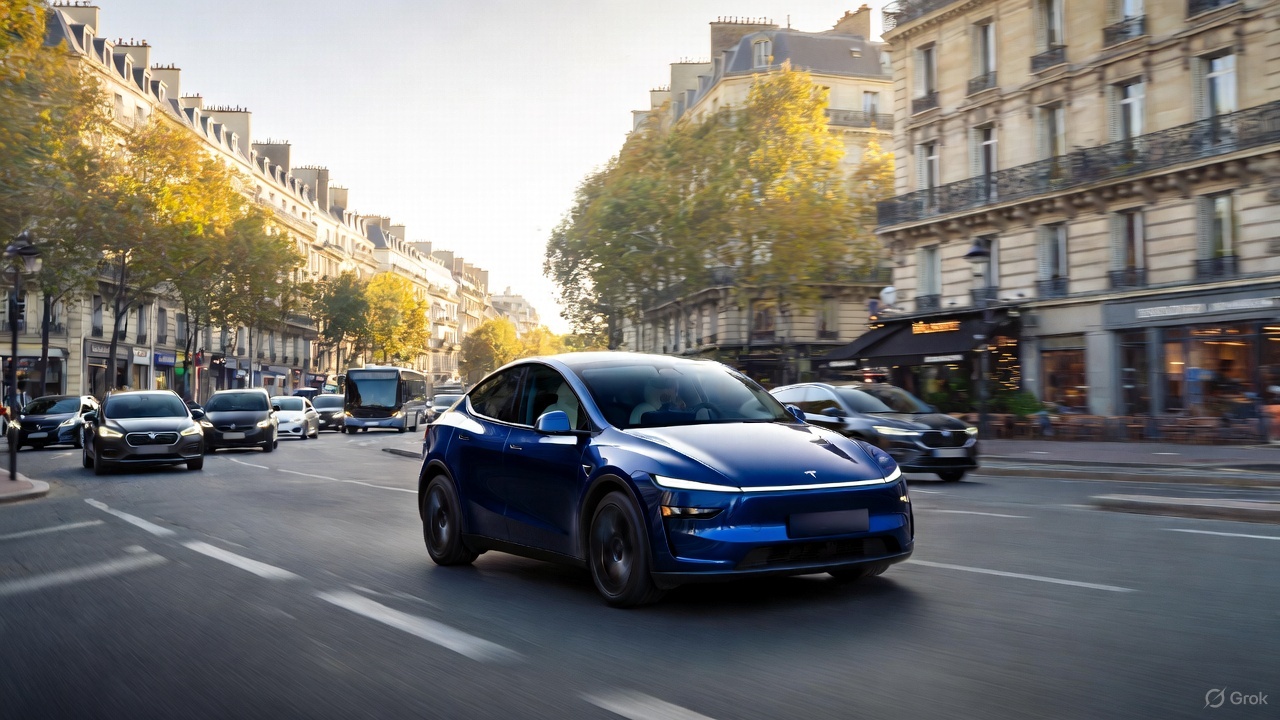
Tesla’s upcoming FSD Supervised system, set for a European debut pending regulatory approval, is showing notably refined behavior in real-world testing, including construction zones, pedestrian detection, and lane changes, as per a recent demonstration ride in Berlin.
While the system still required driver oversight, its smooth braking, steering, and decision-making illustrated how far Tesla’s driver-assistance technology has advanced ahead of a potential 2026 rollout.
FSD’s maturity in dense city driving
During the Berlin test ride with Auto Bild, Germany’s largest automotive publication, a Tesla Model 3 running FSD handled complex traffic with minimal intervention, autonomously managing braking, acceleration, steering, and overtaking up to 140 km/h. It recognized construction zones, braked early for pedestrians, and yielded politely on narrow streets.
Only one manual override was required when the system misread a converted one-way route, an example, Tesla stated, of the continuous learning baked into its vision-based architecture.
Robin Hornig of Auto Bild summed up his experience with FSD Supervised with a glowing review of the system. As per the reporter, FSD Supervised already exceeds humans with its all-around vision. “Tesla FSD Supervised sees more than I do. It doesn’t get distracted and never gets tired. I like to think I’m a good driver, but I can’t match this system’s all-around vision. It’s at its best when both work together: my experience and the Tesla’s constant attention,” the journalist wrote.
Tesla FSD in Europe
FSD Supervised is still a driver-assistance system rather than autonomous driving. Still, Auto Bild noted that Tesla’s 360-degree camera suite, constant monitoring, and high computing power mark a sizable leap from earlier iterations. Already active in the U.S., China, and several other regions, the system is currently navigating Europe’s approval pipeline. Tesla has applied for an exemption in the Netherlands, aiming to launch the feature through a free software update as early as February 2026.
What Tesla demonstrated in Berlin mirrors capabilities already common in China and the U.S., where rival automakers have rolled out hands-free or city-navigation systems. Europe, however, remains behind due to a stricter certification environment, though Tesla is currently hard at work pushing for FSD Supervised’s approval in several countries in the region.
